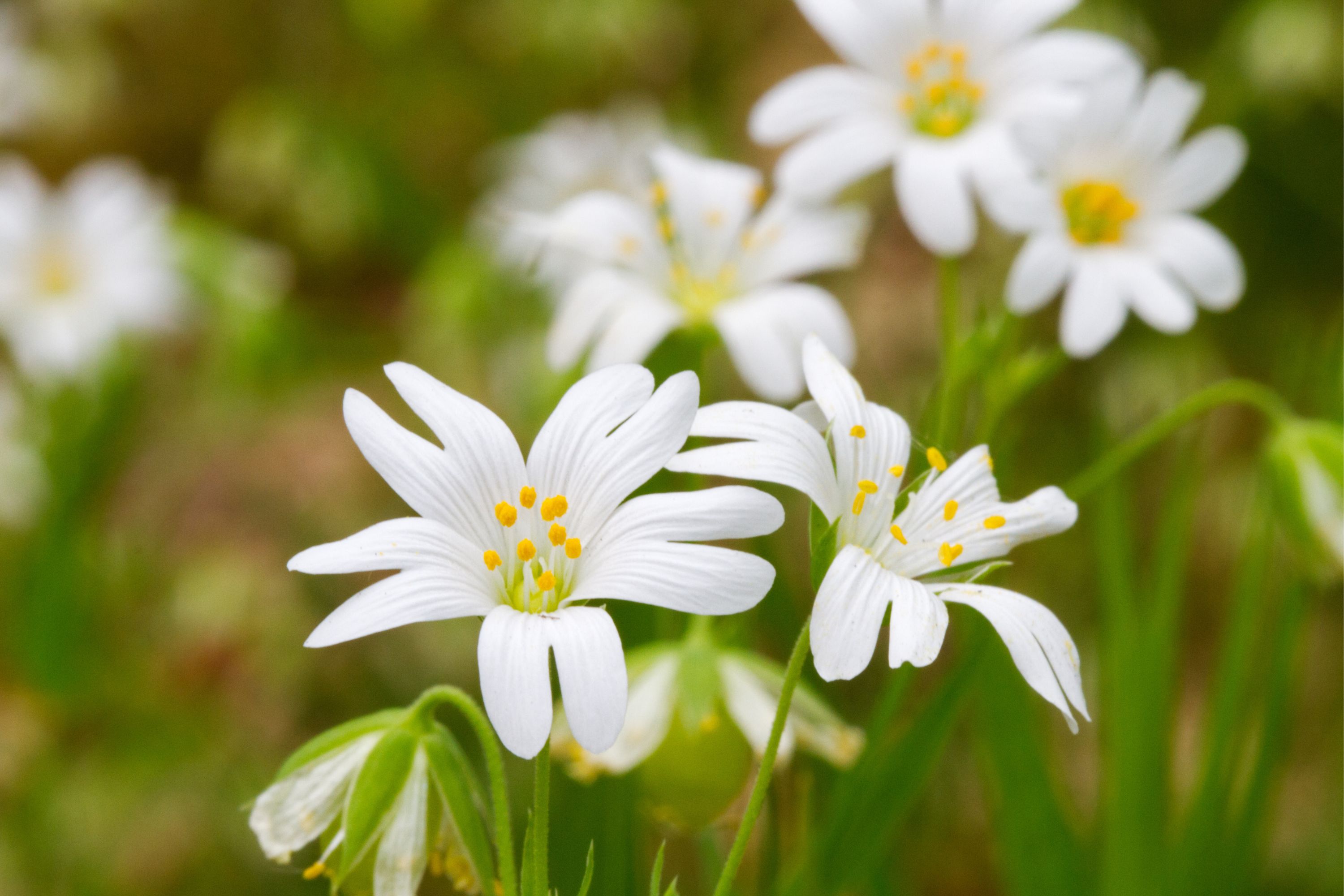Greater stitchwort
(Stellaria holostea)

Description
Stellaria holostea, also known as greater stitchwort, is a flowering plant that belongs to the Caryophyllaceae family. It is a herbaceous perennial that grows to a height of up to 1m (3ft) and has small, star-shaped white flowers that bloom in spring and early summer. The plant is native to Europe and western Asia and is commonly found in woodlands, hedgerows, and meadows. In this article, we will explore the taxonomy, morphology, distribution, habitat, and uses of Stellaria holostea. Taxonomy: Stellaria holostea was first described by Carl Linnaeus in his 1753 publication, Species Plantarum. The plant belongs to the genus Stellaria, which comprises around 90 species of herbaceous plants that are distributed worldwide. The species name holostea comes from the Greek words holos, meaning whole, and osteon, meaning bone. This name refers to the plant's brittle stems that break easily. Morphology: Stellaria holostea is a perennial plant that grows up to 1m (3ft) in height. The stems are slender, erect, and have a square cross-section. The leaves are arranged in opposite pairs along the stem and are ovate-lanceolate in shape, measuring up to 10cm (4in) long and 3cm (1.2in) wide. The leaves have a pointed tip and a smooth margin. The flowers of Stellaria holostea are white, star-shaped, and have five petals that are deeply divided to form ten narrow lobes. The flowers bloom from May to June and are about 1.5cm (0.6in) in diameter. The fruit is a capsule that contains many small seeds. Distribution: Stellaria holostea is native to Europe and western Asia. It is found from Norway and Sweden in the north to Spain and Italy in the south. The plant is also found in the British Isles, where it is widespread and common. Habitat: Stellaria holostea grows in woodlands, hedgerows, and meadows. It prefers moist soils and is often found in damp areas, such as beside streams and ditches. The plant can also grow in open areas, such as roadsides and disturbed ground. It is tolerant of shade and can grow in the understory of woodlands. Uses: Stellaria holostea has several traditional medicinal uses. The plant has been used to treat skin conditions such as eczema, psoriasis, and rashes. It has also been used as a diuretic and to treat urinary tract infections. The plant is rich in saponins, which have anti-inflammatory properties. These compounds are also used in the cosmetic industry for their cleansing and emulsifying properties. In addition to its medicinal uses, Stellaria holostea has culinary uses. The young shoots and leaves are edible and can be added to salads or cooked as a vegetable. The plant has a mild, slightly bitter taste. Conclusion: Stellaria holostea, or greater stitchwort, is a herbaceous perennial plant that is native to Europe and western Asia. It is commonly found in woodlands, hedgerows, and meadows and has white, star-shaped flowers that bloom in spring and early summer. The plant has several traditional medicinal uses and is also edible. Its delicate appearance and ease of cultivation make it a popular ornamental plant in gardens.
Taxonomic tree:







